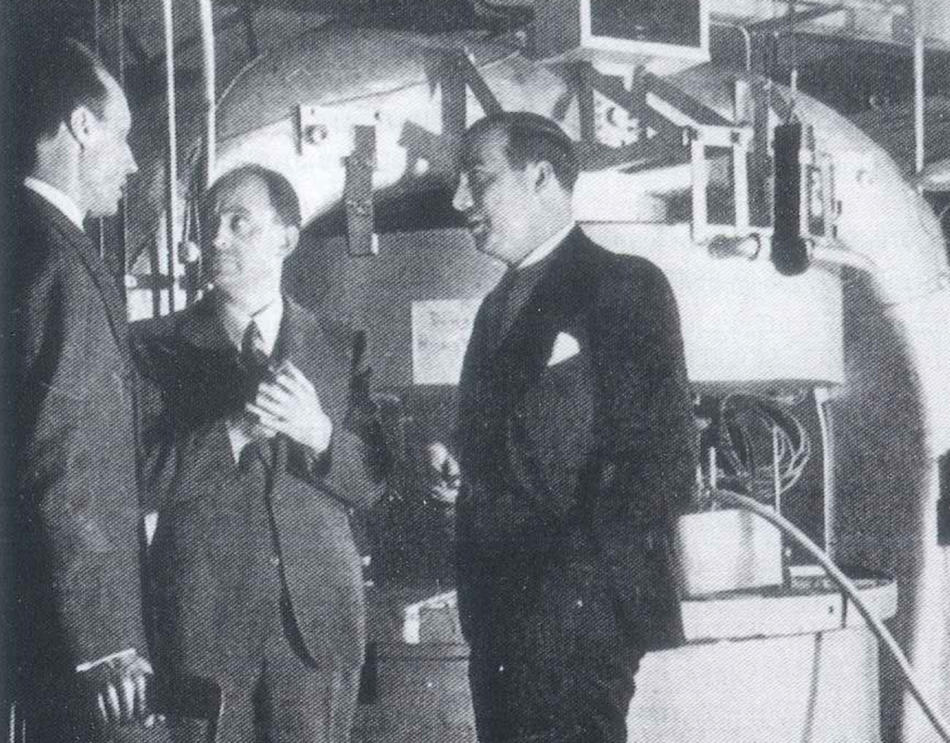They called it leviathan, behemoth, Big Bertha. It is, to paraphrase Herman Melville describing Moby-Dick, of the horrible texture of a fabric that should be woven of blast furnaces and meteors. At 12 feet wide, rising 7 feet above the cement floor and weighing an estimated 65 tons, the Columbia cyclotron, the particle accelerator built in the late 1930s by Columbia physicist John Dunning, played a crucial role in the dawn of the nuclear era.
On January 25, 1939, the news came to Columbia that Austrian scientists had discovered that the uranium atom could be split. Immediately, Dunning and Columbia collaborators began a series of experiments, many involving the cyclotron, whose powerful magnets were used to fire subatomic particles into samples of uranium. Dunning’s experiments verified fission, established many of its properties, and, most significantly, demonstrated that the rare isotope Uranium 235, and not the more common Uranium 238, was the more fissionable form of the element.
After measuring the enormous power released by the uranium atom, Dunning wrote in his journal, “Believe we have observed a new phenomenon of far-reaching consequence.” The door was now open to nuclear energy and the atomic bomb.
The cyclotron was superseded as a forefront research tool in 1950 by Columbia’s 2500-ton atom smasher upriver at Irvington-on-Hudson, but remained active until 1965, when it was decommissioned and key mechanical parts sent to the Smithsonian. For the last 43 years, the leftover magnets have stood in the basement of Pupin Hall like some rusting relic of a world’s fair. Now, with the construction of the adjacent Northwest Corner Science Building under way, the Pupin basement is needed for vital infrastructure. The cyclotron is slated to be dismantled and sold for scrap.
On a recent January morning, George Hamawy, director of the radiation safety program at Columbia, and Andrew Millis, chair of the Columbia physics department, led an informal tour of the monster’s lair in the bowels of Pupin. The mood was upbeat but with an underlying sadness as Millis, a copper-haired man in a dark sweater and cream khakis, gave a curator’s history of the Columbia cyclotron, moving from hard science to breezy anecdote (members of the football team helped get the magnet into Pupin in five-ton sections), and evoking the figures of Dunning, George Pegram, Enrico Fermi, E. T. Booth, Herbert Anderson, and other great Columbia scientists of the age. George Hamawy’s job is to make sure the cyclotron is free of radioactivity before it is taken apart. Early tests have indicated that the machine is indeed scrapworthy. “Everything is clean,” Hamawy said.



